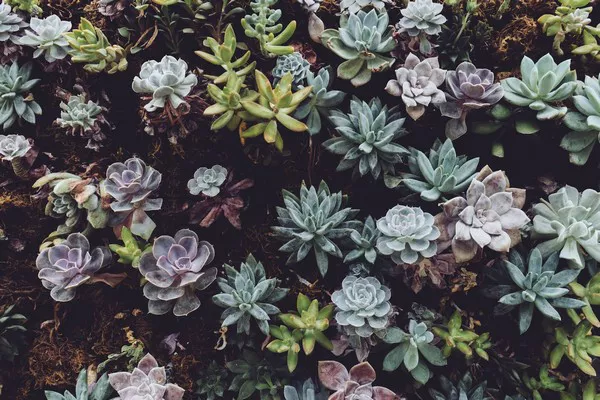1. General Succulent Growth Rate
Succulents, with their captivating shapes and vibrant hues, have garnered immense popularity among plant enthusiasts. Yet, one aspect often overlooked is their growth rate. These resilient plants exhibit a slow-paced journey towards maturity, influenced by various factors. Understanding these dynamics is crucial for nurturing thriving succulent gardens.
Factors Influencing Growth Rate
The growth rate of succulents is a multifaceted phenomenon, intricately linked to environmental conditions and species characteristics. Key factors impacting growth include:
a. Succulent Type: Each succulent species possesses its unique growth pattern. While some, like Aloe vera, exhibit relatively faster growth, others, such as Lithops, are notoriously slow growers.
b. Sunlight: Adequate sunlight is paramount for succulent growth. These plants, native to arid regions, thrive in bright, indirect light. Insufficient light can impede growth, leading to elongated, etiolated stems.
c. Watering: Succulents are adapted to survive in dry conditions, storing water in their fleshy leaves and stems. Overwatering is a common pitfall, leading to root rot and stunted growth. Conversely, underwatering can hinder growth and cause wilting.
d. Temperature: Succulents prefer warm temperatures, with most species thriving in the range of 65°F to 85°F (18°C to 29°C). Extreme heat or cold can stress the plants, slowing down growth or inducing dormancy.
e. Dormancy Periods: Many succulents undergo dormancy phases, typically during winter. During this period, growth slows down as the plants conserve energy. Understanding and respecting these dormancy cycles are vital for promoting healthy growth.
Examples of Growth Rates for Popular Succulents
While generalizations can be made about succulent growth rates, variations exist among species. Here are some examples:
a. Echeveria: These rosette-forming succulents are prized for their stunning foliage. Typically, it takes Echeverias around 2 to 5 years to reach maturity, depending on species and growing conditions.
b. Sedum: With their rapid growth and low maintenance requirements, Sedums are popular choices for succulent gardens. Under favorable conditions, some Sedum species can achieve maturity within a year or two.
c. Haworthia: Known for their architectural beauty, Haworthias exhibit a moderate growth rate. These compact succulents may take 2 to 3 years to reach their full potential, producing clusters of intricate rosettes.
Understanding the growth rates of specific succulents allows enthusiasts to tailor their care routines accordingly, fostering optimal growth and development.
2. Tips for Faster Growth
While succulents are inherently slow growers, certain practices can expedite their growth without compromising their health. Here are some tips to encourage faster growth:
a. Optimal Light Conditions: Adequate sunlight is indispensable for robust succulent growth. Place your plants in a location where they receive bright, indirect sunlight for at least six hours a day. South or west-facing windows are ideal for most succulents, ensuring they receive ample light without risking sunburn.
b. Proper Watering Techniques: Watering practices play a pivotal role in succulent growth. Adopt a “soak and dry” approach, allowing the soil to dry out completely between waterings. During the growing season, typically spring to fall, water more frequently, adjusting frequency based on environmental conditions. In winter, reduce watering to prevent root rot during dormancy.
c. Ideal Soil Mix and Pot Size: Succulents thrive in well-draining soil that prevents waterlogging. Use a specialized succulent or cactus mix, supplemented with perlite or sand to improve drainage. Additionally, choose pots with drainage holes and appropriate size to accommodate the succulent’s root system. A pot slightly larger than the plant’s root ball allows room for growth without excess moisture retention.
d. Fertilization and Propagation Methods: Fertilizing sparingly can provide succulents with essential nutrients for accelerated growth. Opt for a balanced, water-soluble fertilizer diluted to half-strength and apply during the growing season. Propagation techniques, such as leaf or stem cuttings and offsets, offer a cost-effective means to expand your succulent collection. Ensure proper rooting conditions, maintaining adequate moisture without saturating the soil.
By implementing these strategies, enthusiasts can promote vigorous succulent growth while maintaining the plants’ innate resilience and charm.
Conclusion
In conclusion, succulent growth is a nuanced process influenced by various factors, including species characteristics, environmental conditions, and cultural practices. While patience is integral when cultivating succulents, adopting optimal care routines can foster faster growth without compromising plant health. By understanding the intricacies of succulent growth and implementing targeted strategies, enthusiasts can nurture thriving succulent gardens brimming with vitality and beauty.


